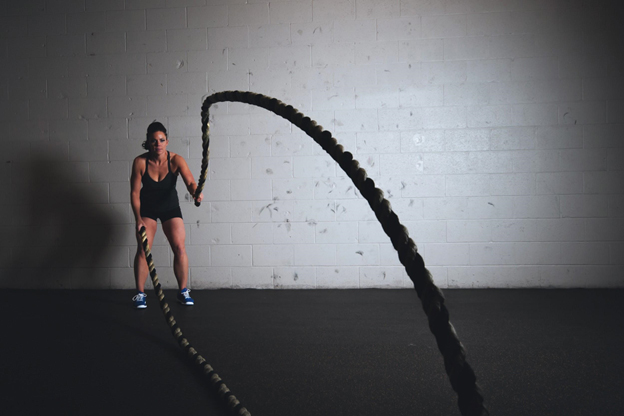Cross Training: How to Avoid Injuries, Part 1
- Published: Friday, May 5th 2017
- in Fitness

Cross training: it’s the key to fine tuning your exercise program for more balanced training—but did you know it can help you avoid injuries, too? Running, aerobics and other forms of weight-bearing exercise put stress on the joints and muscles. And that can result in injury, particularly if you’re not varying your workout. High-intensity routines only work when you give your body time to recover—most experts advise integrating anywhere from 24 to 36 hours of downtime into your training program, which allows your body to regenerate tissue and repair itself.
Cross training—a form of conditioning that differs from your primary training—offers a sort of middle ground between training and rest. Cross-training exercises target different muscles than the ones used during your workout or work the same muscles at different angles. They can be used to achieve high-intensity results with lower impact, leaving you less vulnerable to muscle tears and joint issues. Read on to find out why cross training very well may be the secret ingredient you need to elevate your sport.
Listen to Your Body
Before we start in on cross training, we need to talk about the mind-body connection. Listening to your body perhaps the number one tip for avoiding injury. “Run through the pain” is actually a pretty bad mantra to workout to—that pain is there to alert you that something is wrong. Extreme soreness and aches are an indication that you need to slow your roll and take a day off by rotating cross training and rest days into your fitness plan. How to tell the difference between regular soreness and injuries? The acuteness should be a tipoff—any pain that feels sharp or lasts for more than 48 hours is usually more serious than a little post-workout achiness. So if you feel an intense, acute pain, back off on your training for a little while.
Designing a Cross Training Program That Fits Your Needs
Experts disagree on just what makes for a beneficial cross-training program: some say you should avoid using the parts of the body are targeted in your normal workout, while some believe you should work the same muscles, but differently. When planning your own cross training program, you should weigh the intensity of your workouts and your individual soreness after a hard day, as well as your personal fitness goals. For instance, if you’re a runner who wants to train without stressing the body, a cycling cross training program hits the quads, hamstrings, and calves—but in a lower-impact way than running. On the other hand, if you’re looking for overall muscle balance, you might want to try your hand at power yoga or swimming. And certain cross-training programs are designed to hone in and complement various aspects of your regular workout. For instance, plyometrics or CrossFit will help you build speed and explode off the start line on race days. In general, design your workout with muscle balance in mind, and engage a coach or personal trainer if you need help deciding what that means for you.
Understanding Proper Form
A seasoned runner or swimmer may understand everything there is to know about their sport—but when you begin cross-training, you’re essentially starting all over. For instance, if your trainer recommends rock climbing or kayaking to help with overall performance, it’s dangerous to jump into it without proper training. But even exercises that seem simple require a proper form for results: for instance, if you’re cycling with your knees bent at the wrong angle, you can damage the joints (for the record, the best angle is 25 to 35 degrees). Meanwhile, experienced athletes tend to overestimate their abilities when they switch activities. Remember: you’re working new muscles when you cross train, so you’ll generally need to ease into the program to avoid new or additional injuries.
Don’t Overtrain While Cross Training
Similarly, if you’re using cross training as a break from your usual workout or while you heal an injury, overtraining is just as much of an issue as it is during day-to-day training. If you’re serious about your sport, you may find cross training frustrating, particularly if you’re nursing an injury, which can lead you to overtax your body. Instead, increase the intensity and length of your cross training workouts gradually over time. It’s all about striking a balance.
Need more help selecting a cross training program that works for you? Join us for part two of this series, where we’ll discuss specific types of training and their benefits.



